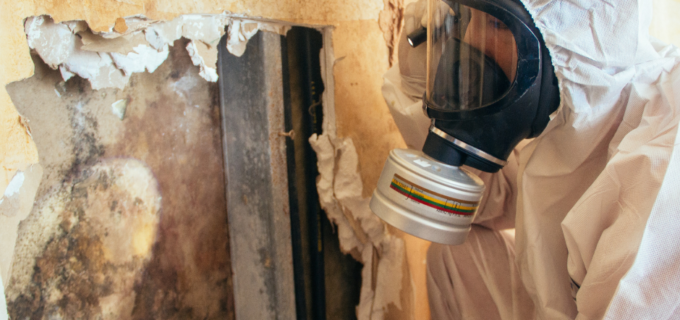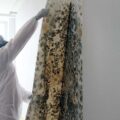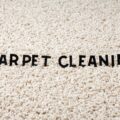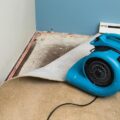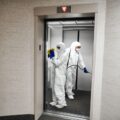
Navigating the Mold Maze in Singapore
In the tropical climate of Singapore, where humidity often soars, mold (or mould, as it’s also spelled) isn’t just a minor nuisance—it’s a persistent challenge that homeowners and businesses alike grapple with. The warm, moist environment provides the perfect breeding ground for various types of mold, turning properties across the Lion City into battlegrounds against these unwelcome intruders. Understanding the complexities of mold issues in Singapore is the first step in addressing them effectively.
The Ubiquity of Mould in Singapore
Mold thrives in our environment, and its presence is more common than many might think. It’s not limited to just old buildings or poorly maintained structures; even the most modern and well-kept spaces can fall victim to mold infestation. The key lies in understanding that mold is not merely a surface problem—it’s an indicator of deeper issues related to moisture and air quality.
In Singapore’s high humidity, mould finds an ally. This leads to a frequent occurrence of mold problems in homes, offices, and even public spaces. The presence of mold is not just a cosmetic issue—it poses significant health risks, particularly for those with allergies, asthma, or weakened immune systems. From causing musty odors to triggering health problems, mold’s impact is far-reaching.
Why Professional Mold Remediation is Critical
Tackling mold is not just about removing visible growth. It’s about understanding its root cause, the type of mold you’re dealing with, and the most effective way to not only remove it but also prevent its recurrence. This is where professional mold remediation services become indispensable.
Professional remediation goes beyond surface-level solutions. It involves a comprehensive approach that includes identifying moisture sources, using advanced techniques to remove mold safely and effectively, and implementing strategies to maintain a mold-free environment. This approach is critical in Singapore’s climate, where DIY methods can fall short, leaving you in a recurring cycle of mould growth and removal.
Moreover, professional services bring with them a wealth of experience and expertise. Specialists in mold remediation understand the unique challenges posed by Singapore’s climate and building structures. They are equipped with the necessary tools and knowledge to not only treat mold but also to advise on preventative measures, ensuring that your space remains healthy and mold-free in the long run.
In conclusion, understanding and addressing mold issues in Singapore requires more than just a quick fix. It calls for a strategic approach backed by professional expertise. As we delve deeper into the world of mold and its remedies, remember that the goal is not just removal but also prevention. In the following sections, we’ll explore the nature of mold, how to identify it, and the crucial role of professional remediation in safeguarding your health and property. Stay tuned to embark on a journey towards a healthier, mold-free environment.
Understanding Mold: More Than Just a Spot on the Wall
Mold, a word often met with unease, is much more than a mere unsightly blotch on walls or ceilings. It’s a living organism, a type of fungus that thrives in damp, warm conditions – conditions that Singapore’s climate generously provides. Grasping the nature of mold is the first step in mastering its management.
What Exactly is Mold?
At its core, mold is a survivor, adept at flourishing in moist environments. It reproduces through tiny spores that travel through the air, invisible to the naked eye. These spores settle on surfaces and, with the right combination of moisture and temperature, begin to grow. In Singapore, the high humidity levels create a hospitable environment for these spores, making mold a common issue in many buildings.
Common Varieties of Mold in Singapore
Singapore’s tropical climate sees a variety of mold types, but some are more prevalent than others. The most common include:
- Aspergillus: Often found on walls and in air conditioning systems, it can cause allergic reactions.
- Cladosporium: Typically seen on fabrics and wood surfaces, known for triggering asthma and allergies.
- Stachybotrys: Also known as ‘black mold’, it’s infamous for its potential to produce toxins and should be addressed immediately.
The Health Risks of Mold Exposure
The health implications of mold exposure are significant and varied. For some, it might trigger allergic reactions, such as sneezing, skin rashes, and eye irritation. For others, particularly those with asthma or compromised immune systems, the impact can be more severe. Inhaling mold spores can exacerbate respiratory conditions and, in rare cases, lead to more serious lung infections.
Understanding mold – its nature, varieties, and health risks – lays the foundation for effective remediation and prevention strategies. As we move forward, we’ll delve into how to identify mold in your spaces and why professional remediation is a crucial step towards a healthier living and working environment. Stay tuned for actionable insights and expert advice on tackling this pervasive challenge in Singapore.
Identifying Mold in Your Home or Office: Spotting the Invisible Enemy
Recognizing mold isn’t always as straightforward as spotting a dark patch on the wall. In the battle against mold in Singapore, knowledge is your best defense. By learning to identify the signs of mold infestation, you can take early action to mitigate its impact on your health and property.
Signs of Mold Infestation
Mold manifests in various ways, and some signs are more obvious than others:
- Visual Clues: Look out for discoloration or fuzzy growth on walls, ceilings, or other surfaces. Mold can appear in a range of colors – black, green, white, or even orange.
- Musty Odors: A persistent earthy or musty smell is often the first indication of hidden mold.
- Health Symptoms: Unexplained allergic reactions such as sneezing, coughing, or eye irritation when indoors may suggest the presence of mold.
Mold-Prone Areas in Singaporean Properties
Certain areas in Singaporean homes and offices are more susceptible to mold growth due to higher moisture levels:
- Bathrooms and Kitchens: With frequent water use, these areas are prime spots for mold. Regularly check under sinks, around bathtubs, and near plumbing fixtures.
- Air Conditioning Units: The combination of moisture and dust makes air conditioners a common site for mold.
- Windows and Walls: Condensation on windows and dampness in walls, especially during the monsoon season, can lead to mold growth.
Indications of Hidden Mold
Mold isn’t always visible. It can lurk behind wallpapers, in ceiling tiles, or within ventilation systems. Be alert to:
- Persistent Health Issues: If you experience ongoing respiratory problems or allergic reactions at home or work, it might be due to unseen mold.
- Water Damage: Areas that have suffered water damage, such as after a leak, are potential breeding grounds for hidden mold.
Identifying mold is a crucial step in maintaining a healthy indoor environment. As we progress, we’ll explore the differences between DIY and professional mold remediation, and why in a place like Singapore, professional intervention is not just a choice, but a necessity for long-term health and safety. Stay tuned to learn how to safeguard your space from this subtle yet significant threat.
DIY vs. Professional Mold Remediation: Navigating the Best Path Forward
In the quest to maintain a mold-free environment in Singapore, understanding the appropriate approach to remediation is crucial. While DIY methods have their place, recognizing their limitations and the superior benefits of professional services is key to making an informed decision.
Appropriate Scenarios for DIY Mold Remediation
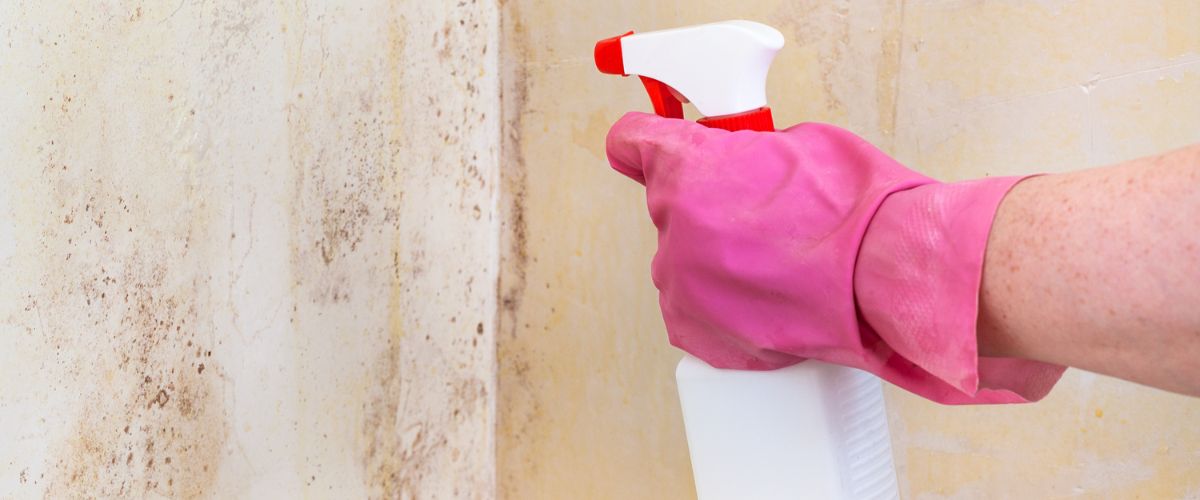
DIY mold removal can be a feasible option under certain conditions:
- Small Areas: If the mold covers an area less than about a square meter, and is on a non-porous surface, DIY can be effective.
- Surface Mold: For superficial mold on tiles, glass, or metal, household cleaning products can be sufficient.
In these cases, safety is paramount. Wearing protective gear, such as gloves and masks, and ensuring good ventilation is essential to protect yourself from mold spores.
The Limitations and Risks of DIY Mold Removal
However, DIY solutions are not without their drawbacks:
- Incomplete Removal: DIY methods often address only the surface mold, neglecting underlying issues like hidden moisture sources.
- Health Hazards: Disturbing mold can release harmful spores into the air. Without proper containment measures, this can exacerbate health problems.
- Recurring Infestations: Without addressing the root cause, mold is likely to return, leading to a frustrating cycle of cleaning and regrowth.
The Unmatched Benefits of Professional Mold Remediation

When it comes to mold remediation, the expertise and equipment professionals bring to the table are invaluable:
- Comprehensive Assessment: Professionals can thoroughly assess the extent of mold growth and identify hidden infestations, ensuring a complete solution.
- Advanced Techniques and Equipment: Professionals use state-of-the-art equipment like HEPA filters and air scrubbers to safely and effectively remove mold, ensuring thorough cleanup and containment of spores.
- Long-term Solutions and Prevention: Professional services don’t just remove existing mold; they also identify and address the source of moisture, providing lasting solutions and advice on preventing future growth.
In essence, while DIY methods may seem cost-effective for minor issues, the complexities of mold growth in Singapore’s humid climate often demand the thorough, expert approach of professional remediation. This ensures not only immediate resolution but also safeguards against future infestations, protecting your health and property in the long run. As we explore further, we’ll delve into the role of advanced equipment in professional mold remediation, highlighting how these tools are essential in ensuring a safe and effective cleanup process.
The Role of Advanced Equipment in Mold Remediation: Ensuring Safety and Efficiency

In the battle against mold, especially in a climate like Singapore’s, the right tools are as crucial as the right techniques. Advanced equipment plays a pivotal role in professional mold remediation, ensuring not just effective removal but also safeguarding health during the process. Let’s explore how this equipment makes a difference.
The Critical Role of HEPA Filters
HEPA (High-Efficiency Particulate Air) filters are the cornerstone of mold remediation. These filters are designed to trap 99.97% of particles that are 0.3 microns or larger, effectively containing mold spores that could otherwise become airborne during removal. This containment is crucial not only for the immediate area being treated but also for preventing the spread of spores to other parts of the property.
Specialized Equipment in Mold Remediation
Professional remediation teams employ a variety of specialized tools, including:
- Air Scrubbers: These machines, equipped with HEPA filters, clean and filter the air, removing airborne mold spores.
- Dehumidifiers: By reducing humidity levels, dehumidifiers help prevent mold growth, addressing one of the key conditions that mold needs to thrive.
- Infrared Cameras: These cameras can detect moisture in walls and ceilings, identifying potential mold hotspots that aren’t visible to the naked eye.
- Moisture Meters: Essential for measuring the moisture content in various materials, these meters help determine if conditions are conducive to mold growth.
Preventing Health Hazards During Cleanup
The use of these advanced tools is about more than just efficiency; it’s about safety. By containing and removing mold spores from the air, the risk of inhalation and subsequent health issues is greatly reduced. Moreover, the ability to identify and address hidden moisture sources ensures a thorough cleanup, preventing future mold growth and the health risks associated with it.
In summary, the use of advanced equipment in mold remediation is a game-changer, particularly in Singapore’s mold-prone environment. It not only ensures the complete and effective removal of mold but also plays a critical role in maintaining a safe and healthy environment during and after the remediation process. As we continue, we’ll look into the specific steps involved in the professional mold remediation process, highlighting how expertise and technology come together to provide a lasting solution.
The Professional Mold Remediation Process: A Step-by-Step Approach for Lasting Results
Understanding the professional mold remediation process demystifies what happens after you call the experts, especially in a humid environment like Singapore. This knowledge not only prepares you for what to expect but also underscores the value of professional intervention. Let’s break down this meticulous process.

Initial Assessment and Mold Testing
The first step in professional mold remediation is a thorough assessment. This involves:
- Inspection: Experts conduct a detailed examination of your property to identify visible signs of mold.
- Mold Testing: In some cases, testing is performed to determine the mold type and concentration. This can involve air sampling and surface swabs, which are analyzed in a lab to guide the remediation strategy.
Containment Strategies to Prevent Mold Spread
Containing the mold to the affected area is crucial to prevent cross-contamination. Professionals use several strategies:
- Physical Barriers: Plastic sheeting and tape are used to seal off the affected area.
- Negative Air Pressure: This technique prevents air from the contaminated area from moving into clean areas.
- Sealing HVAC Systems: Air vents are sealed to stop spores from spreading through the building’s heating, ventilation, and air conditioning system.
Detailed Mold Removal Techniques
Once containment is established, the actual removal process begins:
- Removing Moldy Materials: Porous materials like drywall or insulation that are heavily infested are often removed and disposed of.
- Cleaning and Disinfecting: Non-porous surfaces are thoroughly cleaned using specialized cleaning agents.
- HEPA Vacuuming: After cleaning, the area is vacuumed with a HEPA-filtered vacuum to capture any lingering spores.
Safe and Eco-Friendly Mold Remediation Methods
Safety and sustainability are at the forefront of professional mold remediation:
- Eco-Friendly Products: Many professionals use green cleaning products that are effective against mold yet safe for the environment and occupants.
- Safe Disposal: Contaminated materials are disposed of safely to prevent environmental damage.
- Safety Protocols: Throughout the process, technicians wear protective gear and follow strict safety guidelines to protect themselves and the occupants of the building.
In summary, professional mold remediation is a comprehensive process that combines thorough assessment, effective containment, meticulous removal, and safety-conscious methods. This process not only addresses the current mold issue but also helps prevent future growth, ensuring a healthy living or working environment. As we move forward, we’ll explore the critical aspects of health and safety during mold remediation, emphasizing the measures taken to protect both the remediation team and the property’s occupants.
Health and Safety During Mold Remediation: Prioritizing Well-being

In mold remediation, particularly in the humid backdrop of Singapore, safeguarding health and safety is paramount. This commitment extends beyond merely removing the mold to ensuring the entire process upholds the highest standards of safety for both the technicians and the building’s occupants.
Employing Essential Safety Equipment
Professional remediation teams are equipped with specialized safety gear, which includes:
- Protective Suits: Full-body suits prevent direct contact with mold and its spores.
- Gloves and Goggles: These protect the hands and eyes from irritants found in mold and cleaning agents.
- Respirators: High-quality respirators are essential to protect the lungs from inhaling mold spores, especially in environments with high spore concentrations.
Protecting the Health of Residents
The health of those living or working in the building is a top concern. During remediation, efforts are made to:
- Minimize Exposure: Residents may be advised to vacate the premises, especially in cases of extensive mold growth.
- Prevent Cross-Contamination: Techniques like containment and negative air pressure help keep other areas of the building free from mold spores.
Ensuring Long-term Indoor Air Quality
The goal is to leave behind not just a mold-free space but also an environment with improved air quality. This is achieved through:
- Thorough Cleaning: Post-remediation, the area is meticulously cleaned to remove any residual spores.
- Air Filtration: Air scrubbers with HEPA filters are often used to cleanse the air of any lingering spores.
In essence, health and safety are the cornerstones of professional mold remediation. The process is designed to effectively address mold issues while simultaneously ensuring the well-being and comfort of those who occupy the space. This approach guarantees not just immediate relief from mold problems but also contributes to the long-term healthiness of the indoor environment. Next, we will explore real-life applications of these practices through case studies, providing insights into the effectiveness and impact of professional mold remediation.
Case Studies: Real-World Applications of Mold Remediation
Understanding how mold remediation works in real scenarios provides valuable insights. Let’s explore three case studies that highlight the challenges, strategies, and outcomes of effective mold remediation.
Case Study 1: Mold Remediation in a Hospital
Situation Overview and Challenges Faced
A major hospital in Singapore faced a mold outbreak in several wards. The challenge was to address the mold without disrupting hospital operations and compromising patient health.
Remediation Strategies Used
The remediation team implemented rigorous containment measures to isolate affected areas. Advanced HEPA-filtered air scrubbers were used to maintain air quality, and mold was removed using eco-friendly disinfectants. Special attention was given to HVAC systems to prevent spore circulation.
Outcomes and Lessons Learned
Post-remediation, air quality tests confirmed the complete removal of mold. The incident emphasized the importance of regular mold inspections in healthcare facilities and the need for immediate action upon detection.
Case Study 2: Mold Issues in a Home Office during COVID-19
Description of the Mold Problem
With the rise of Work-From-Home (WFH) during COVID-19, a residential unit saw increased mold growth in its makeshift home office, attributed to poor ventilation and high humidity.
Remediation Approach and Techniques
A thorough assessment identified the mold’s extent. The team used gentle yet effective cleaning agents to remove the mold and suggested improvements in ventilation to the homeowner.
Impact and Prevention Strategies
Post-remediation, the air quality improved significantly, creating a healthier WFH environment. The homeowner was advised on regular air quality checks and the use of dehumidifiers to prevent future mold issues.
Case Study 3: Mold in a Residential Home due to Temperature Differences
Analysis of How Temperature Variations Led to Mold Growth
A residential home experienced mold growth in areas where cold air from air conditioners met warmer external air, creating condensation.
Remediation Methods and Homeowner Education
The remediation process involved addressing the condensation issue and removing mold from affected areas. Homeowners were educated on the importance of maintaining consistent temperatures and adequate insulation.
Results and Future Prevention Advice
The intervention successfully eradicated the mold, and the homeowners reported no recurrence. They were advised to monitor temperature variations and consider using air conditioners with built-in dehumidifiers.
Each case study demonstrates the complexity of mold issues and the effectiveness of professional remediation. They underscore the importance of tailored strategies to address specific challenges and the lasting impact of preventive measures. Up next, we’ll delve into strategies to prevent future mold growth, drawing from these real-life experiences.
Preventing Future Mold Growth: Proactive Steps for a Healthier Environment
Maintaining a mold-free environment, especially in Singapore’s humid climate, requires ongoing vigilance and proactive measures. Implementing effective prevention strategies is key to ensuring that once remediated, your space remains safe and healthy.
Maintenance Tips for a Mold-Free Environment
Regular cleaning and maintenance are crucial. Here are some tips:
- Keep Surfaces Dry: Wipe down wet surfaces, especially in bathrooms and kitchens, to prevent moisture accumulation.
- Regular Cleaning: Regularly clean areas prone to mold growth, using mold-inhibiting cleaning products if necessary.
The Importance of Regular Inspections
Scheduling regular mold inspections is vital for early detection:
- Professional Assessments: Regular professional inspections can identify potential mold issues before they become significant problems.
- Self-Inspections: In addition to professional help, routinely check common mold-prone areas yourself, staying alert for any signs of mold or moisture.
Humidity Control and Ventilation Solutions
Controlling indoor humidity and ensuring proper ventilation are key:
- Use Dehumidifiers: These can be particularly effective in reducing indoor humidity levels, making the environment less hospitable for mold.
- Improve Ventilation: Ensure adequate airflow, particularly in areas like kitchens and bathrooms. Use exhaust fans and open windows where possible to circulate air.
By integrating these practices into your regular maintenance routine, you can greatly reduce the risk of mold recurrence. These measures not only contribute to a mold-free environment but also promote overall healthier indoor air quality. In the next section, we will explore the specific health implications of mold exposure and how addressing mold contributes to a healthier living and working space.
Understanding BRI and SBS: The Hidden Impact of Mold
Mold’s influence extends beyond visible infestations, contributing to broader health concerns like Building Related Illness (BRI) and Sick Building Syndrome (SBS). Grasping these concepts is crucial for understanding the full impact of mold in indoor environments.
Building Related Illness: A Case Study
Consider a Singapore office building where employees started experiencing chronic respiratory problems, headaches, and fatigue. Investigations revealed high levels of mold spores in the HVAC system, a classic case of BRI. This illness is characterized by specific health symptoms that can be directly linked to airborne building contaminants, like mold. Once the mold was professionally remediated, and the air quality improved, employees reported a significant decrease in their symptoms.
Sick Building Syndrome Explained
SBS, on the other hand, is a condition where building occupants experience acute health and comfort effects, but no specific illness or cause can be identified. Symptoms, which typically resolve after leaving the building, can include eye, nose, and throat irritation, dry cough, and dizziness. Mold can significantly contribute to SBS by deteriorating indoor air quality.
The Role of Mold in BRI and SBS
Mold plays a pivotal role in both BRI and SBS. Its spores and byproducts can pollute indoor air, triggering a range of health issues. In cases of BRI, these effects are more direct and identifiable, while in SBS, mold contributes to a general decline in environmental quality, leading to nonspecific but impactful health effects.
Understanding the relationship between mold, BRI, and SBS underscores the importance of maintaining a mold-free environment. Not only does it prevent visible mold growth, but it also contributes to overall health and well-being, reducing the risks associated with these syndromes. In the upcoming section, we’ll explore why choosing professional remediation services is a smart investment for the health and safety of your indoor spaces.
Why Choose Big Red Singapore: Expertise, Innovation, and Proven Results
When facing mold challenges, the choice of remediation service is crucial. Big Red Singapore stands out for its deep expertise, innovative approaches, and a solid track record of success. Here’s why Big Red is the go-to choice for mold remediation.
Unparalleled Expertise and Experience
At Big Red Singapore, we pride ourselves on our extensive experience and knowledgeable team. Our professionals are not only trained in the latest mold remediation techniques but also deeply understand the science behind mold growth. This expertise enables us to offer comprehensive and long-lasting solutions to our clients.
Innovative Services Tailored to Your Needs
Our commitment to innovation sets us apart:
- Customized Solutions: Recognizing the uniqueness of each mold situation, Big Red provides personalized remediation plans tailored to the specific needs of your space.
- State-of-the-Art Technology: We employ the latest technological advancements, including HEPA filters and infrared cameras, ensuring thorough and effective mold remediation.
Proven Track Record with Testimonials and Case Studies
Big Red Singapore’s reputation is built on a foundation of proven success. Our portfolio of satisfied clients, evident through glowing testimonials and detailed case studies, spans residential to large-scale commercial projects. These success stories underscore our commitment to delivering top-notch service and reliability.
Opting for Big Red Singapore means choosing peace of mind. You’re entrusting your property to a team of seasoned professionals committed to creating a healthy, safe, and mold-free environment. Next, we’ll explore the factors influencing the cost of mold remediation and how investing in Big Red’s professional services can be cost-effective and beneficial in the long term.
Cost Considerations: Understanding the Value of Professional Mold Remediation
Addressing mold effectively is an investment in your property’s health and longevity. Understanding the factors that influence the cost of remediation and the long-term financial benefits is essential for making an informed decision.
Factors Affecting Remediation Costs
Several elements play a role in determining the cost of mold remediation:
- Extent of Infestation: Larger and more complex infestations require more resources, impacting the overall cost.
- Location and Accessibility: Hard-to-reach areas may require additional labor or equipment.
- Type of Mold: Certain mold types may necessitate specialized removal techniques.
Pricing Overview
At Big Red Singapore, we offer transparent pricing based on a thorough assessment of your specific situation. Our goal is to provide effective solutions that align with your budgetary constraints.
Long-term Financial Benefits
Investing in professional mold remediation can save money in the long run by:
- Preventing Structural Damage: Timely remediation protects your property from costly structural damages.
- Avoiding Health Costs: By removing harmful molds, you reduce potential health-related expenses.
- Enhancing Property Value: A mold-free property maintains its value and appeal in the market.
Professional mold remediation is not just a cost; it’s an investment in the future health and integrity of your property. In the next section, we will wrap up our discussion by summarizing the critical points and inviting you to take the next step towards a mold-free environment.
Conclusion: Safeguard Your Space with Big Red Singapore
In conclusion, tackling mold effectively is crucial for maintaining a healthy and safe environment. Professional mold remediation, as we’ve explored, goes beyond mere removal; it offers a comprehensive approach to not only eradicate current issues but also prevent future occurrences. Big Red Singapore stands at the forefront of this endeavor, offering expertise, advanced technology, and tailored solutions.
Choosing professional remediation is an investment in your property’s health and longevity. With Big Red Singapore, you gain peace of mind knowing that your mold issues are being addressed thoroughly and efficiently, safeguarding your property’s value and your well-being.
Don’t let mold compromise your living or working space. Reach out to Big Red Singapore for a consultation and take the first step towards a mold-free environment. Contact us at info@bigred.com.sg or call +65 6241 9443. Our team is ready to provide you with the expertise and solutions you need to ensure a healthy, safe, and mold-free space.
Learn more: Restoring Flood and Water Damaged Properties
